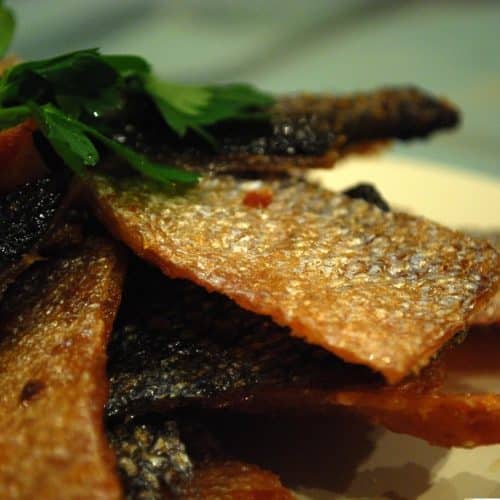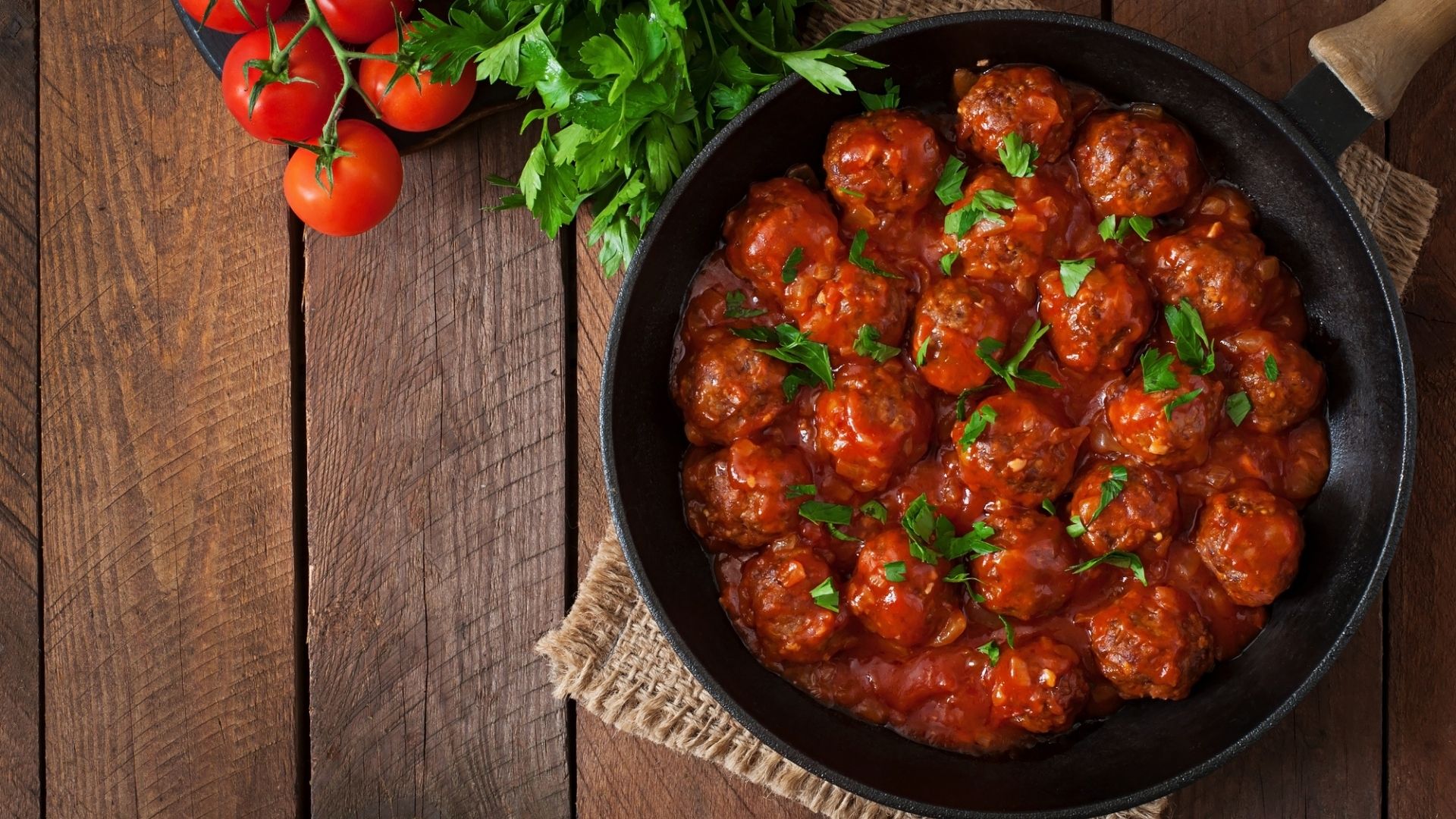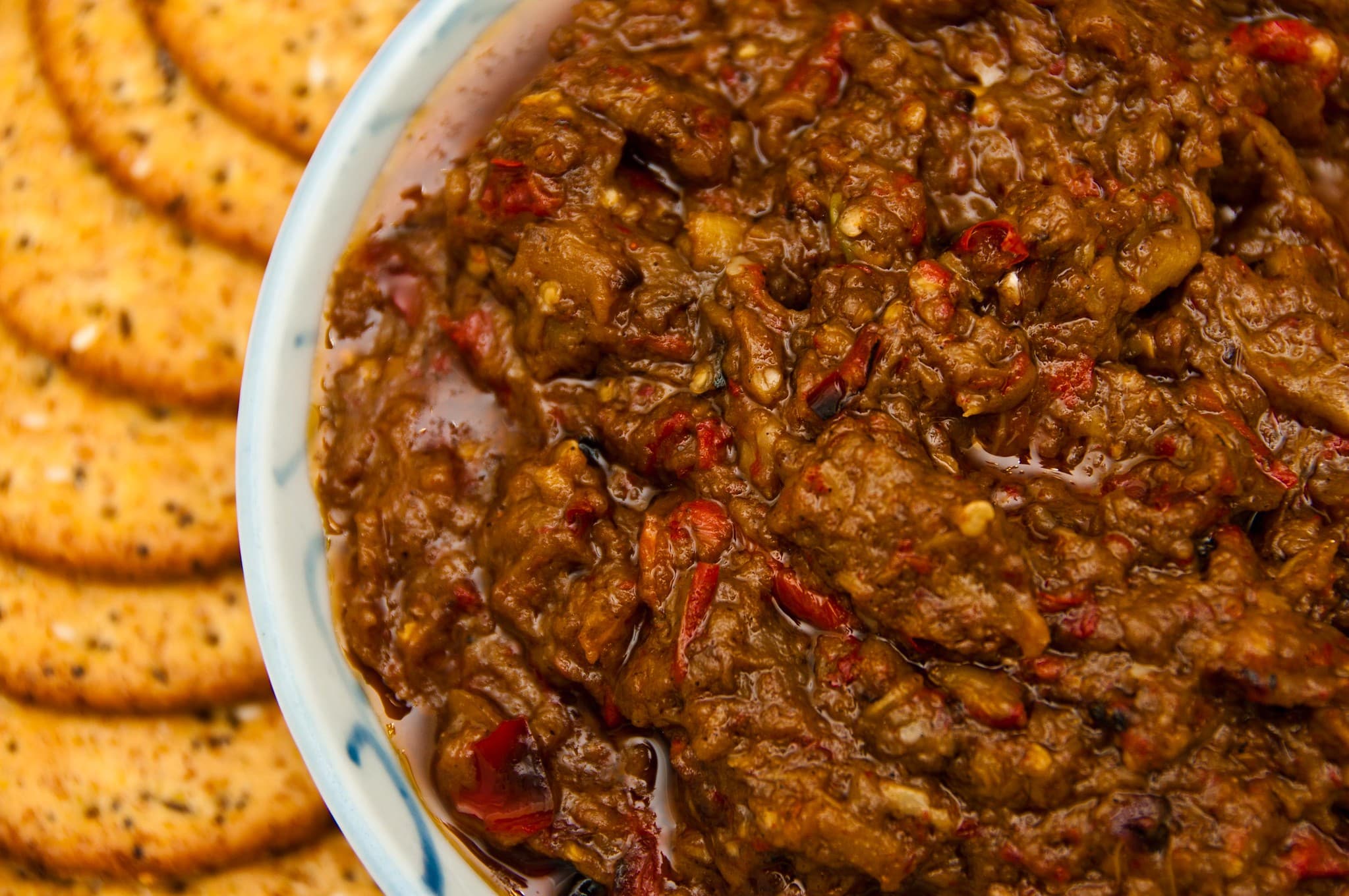Imagine sitting at a swanky restaurant, enjoying a scrumptious salmon meal. The fish is prepared perfectly, boasting a crispy, delectable skin.
You then wonder, is salmon skin good for you?
Does it have any health benefits?
When cooked right, salmon skin is not only a flavor bomb but also has many incredible nutritional benefits.
So, is it okay to eat salmon skin?
Yes.
Salmon is an oily fish, and its skin is generally safe and healthy for consumption.
The U.S. Food and Drug Administration recommends people to eat at least two to three servings of oily fish like salmon every week.
The skin is an excellent source of omega-3 fatty acids, antioxidants, vitamin D and B, and minerals like phosphorus.
Well-prepared salmon skin adds a unique flavor and welcomes a texture contrast that goes well with the soft flakiness filet.
Salmon skin is not only packed with essential healthy nutrients but also helps to keep oil and nutrients inside the fish.
This article will elaborate on why salmon skin is good for your health and why you should incorporate it into your next dish.
Is the skin of salmon good for you?
Salmon is an oily fish well-regarded for its many nutritional benefits.
Its skin has healthy Omega-3 fats that lower the risks of cardiovascular diseases such as heart attacks.
The skin has low cholesterol, thus a good alternative for people who want to lower cholesterol intake and lose weight.
Salmon skin is rich in antioxidants that prevent the damage of cells by free radicals in the body.
The antioxidants also help in managing type-2 diabetes.
Moreover, salmon skin is a healthy protein and a better alternative for people who want to avoid red meat.
Is salmon skin healthy?
Salmon skin provides additional minerals and nutrients to your body.
Salmon leaves in extremely cold water, which makes its skin develop a high concentration of omega -3 fatty acids to keep it warm.
Here are the health benefits of eating salmon skin.
- Keeps your heart healthy- Omega- 3 fatty acids lower the risks of hypertension and heart diseases. These fatty acids create healthy blood pressure that doesn’t strain your heart.
- Maintain brain health – Salmon skin is rich in antioxidants that promote the growth of healthy cells in the brain. The omega- 3 fatty acids also manage brain diseases like depression, brain fog, and degeneration.
- Good source of protein – Salmon skin is a good source of protein that supports your skin, hair, muscles, brain, nails, and blood. Proteins have anti-aging properties and also help heal your body after injury.
- Promotes healthy eyes – Omega- 3 fatty acids support optimal eye function. Salmon skin contains eicosapentaenoic and docosahexaenoic acid that maintains the eyes’ health. These two acids protect you from getting chronic dry eyes and poor eyesight.
- Promotes healthy skin – Salmon skin contains antioxidants that fight free radicals responsible for speeding up the skin’s aging process. Minerals such as niacin help the skin retain moisture, thus making you have a healthy and glowing skin. The omega- 3 fatty acids in salmon skin have anti-inflammatory properties that prevent acne.
- Promotes healthy bones and teeth – Vitamin D in salmon skin helps absorb calcium, which is essential for healthy bones. Salmon skin is perfect for aged people because it strengthens their bones.
- Improves metabolism – Salmon skin is rich in vitamin B and D, which aid in enhancing metabolism. Improved metabolism makes your body produce enough energy and maintain a healthy weight.
- Boost the immune system: Salmon skin is rich in minerals and vitamins that boost your immune system. The skin is also rich in antioxidants that prevent inflammation. Chronic inflammation can suppress your immune system, thus making you get sick more often.
- Lower risks of cancer, diabetes, and other diseases – Many chronic diseases are associated with the body’s inflammation. Salmon skin has anti-inflammatory properties that help prevent diseases such as type 2 diabetes, cancer, and lesions.
Is it safe to eat salmon skin?
Generally, salmon skin is safe to eat.
However, there are rising concerns due to high water and air pollution rates.
Salmon can swim and feed on animals from contaminated waters, and the toxins will accumulate in their fat and skin.
The methylmercury and polychlorinated biphenyls (PCBs) pollutants can adversely affect your body.
For example, these pollutants can cause metabolic disorders like obesity and type 2 diabetes.
Studies show that farm-raised salmon have a higher concentration of PCBs than wild salmon.
The report further indicates that the risks associated with farmed Atlantic salmon outweigh its health benefits, so you should avoid it.
Be mindful of where you buy your salmon from to be on a safer side.
How to get the perfect crispy salmon skin
Do you want to incorporate salmon skin in your dish but don’t know how to prepare it?
The best way to get crispy salmon skin is by pan-frying it.
To achieve a crunchy and delicious texture, follow the tips below.
- Step 1: Rinse the salmon filet to remove dirt, then pat it dry to remove moisture.
- Step 2: Place the filet skin on a clean cutting board and run the edge of your knife across the skin. Apply light pressure until you see excess moisture building up on your knife.
- Step 3: Open your stove and place the pan on it. Add butter as the pan heats up.
- Step 4: Sear the salmon to lock the flavor while giving the edges a crispy texture. Cook it for about 3-4 minutes on each side.
- Step 4: Remove your crispy salmon strips from the pan and place them on a paper towel to drain the excess oil.
- Step 5: Add salt and your favorite seasoning to taste.
Drug interactions and other risks
Salmon skin is rich in omega-3 fatty acids, which can interact with drugs such as blood thinners.
While it’s okay to eat salmon skin occasionally, it’s good to consult your doctor before making any drastic changes to your diet.
Salmon skin has calories, and adding it to your diet will add more calories.
People watching their calorie intake must consider this before adding the skin into their diet plans.
Final Thoughts
Salmon skin is mainly healthy and safe for consumption.
The skin is packed with healthy fats, minerals, and vitamins that prevent cardiovascular diseases and metabolic disorders like type 2 diabetes.
Although salmon skin is considered safe for consumption, it’s advisable to mind the source of your salmon.
Generally, salmon skin is nutritious, and you should consider adding it to your next dish.
Frequently Asked Questions (FAQs)
Is salmon skin high in calories?
Yes.
Salmon skin’s calories are different, but on average, one salmon filet contains about 284 calories.
Eating salmon with skin will add more calories to your diet, and people watching their diet should consider this factor.
Is salmon skin bad for you?
No, salmon skin is generally healthy and safe to eat.
However, some farm-raised salmon have a higher concentration of PCBs on their skin, which can harm your health if consumed.
Eating contaminated salmon skin can cause health problems like skin irritation, liver damage, reproductive health effect, and cancer.
Is salmon skin nutritious?
Yes, salmon skin is packed with many necessary nutrients like vitamin D, minerals, and omega-3 fatty acids.
Your body absorbs these nutrients, thus protecting you from illnesses.

Crispy Salmon Skin
Ingredients
- salmon skin
- salt and pepper
- cooking oil
- dipping sauce
Instructions
- Remove the skin off the salmon
- Slice skin into long, thin pieces
- Toss strips in brine for fifteen minutes
- Pat with paper to get rid of excess fluid
- Season salmon skin strips with pepper
- Add cooking oil in a wok till ¾’’ high
- Add salmon strips when the oil gets hot
- Cook for fifteen minutes, stirring frequently
- Serve with a dipping sauce of your choice
Video
- 25 Homemade Sour Cream Recipes - July 27, 2024
- 25 Simple Camping Breakfast Ideas - July 27, 2024
- 25 Homemade Keto Crockpot Recipes - July 27, 2024



